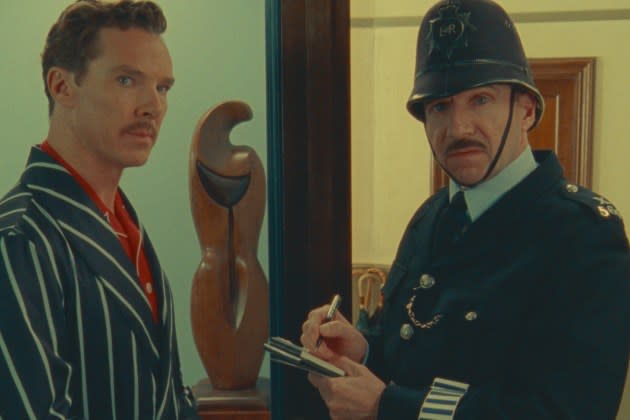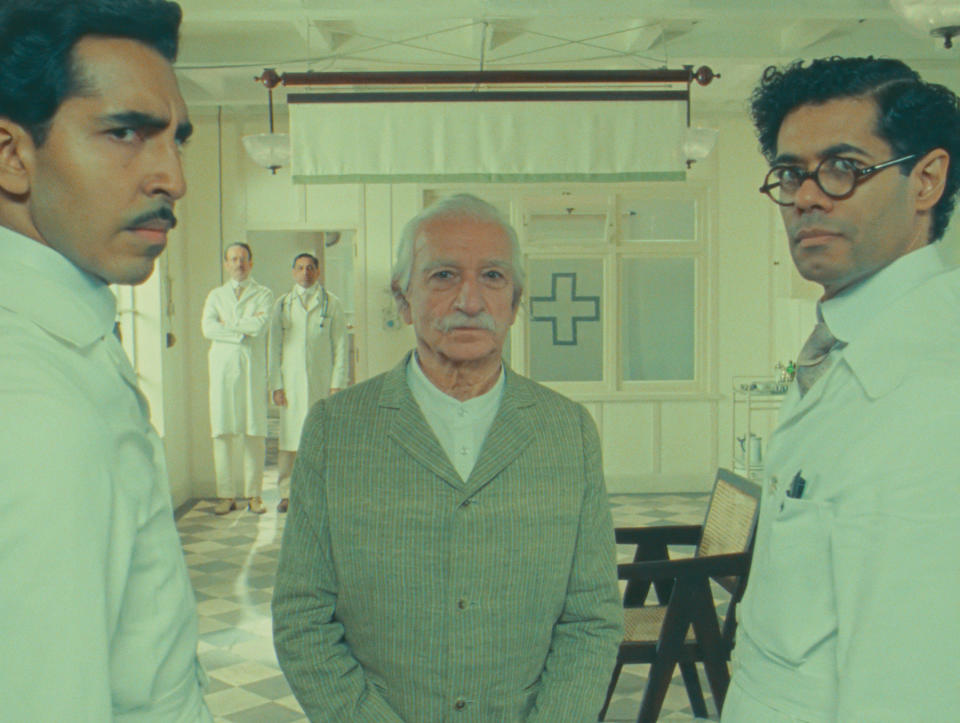Wes Anderson’s ‘The Wonderful Story of Henry Sugar’ Is Barely a Movie — and One of His Best

The golden rule is usually, “Show, don’t tell.” And Wes Anderson is a filmmaker who — judging by the overly meticulous mise-en-scène, the highly mannered methods of his storytelling, the obsessive curating and compulsive footnoting of onscreen bric-a-brac — seems to love the structure that comes with obeying unwritten rules. All the better to break them occasionally, of course, or to at least modify your parameters in a way that suits both the material and your signature. There’s a lot of the expected Westhetic going on in The Wonderful Story of Henry Sugar, with enough symmetrical frames full of information and perfectly centered characters speaking as if their tongues were married to their cheeks. It’s undeniably his movie, brimming with a style so recognizable as to be easily parodied.
Except Anderson has put his visual template on the same level as the prose that his actors are reciting — not just dialogue, but actual prose — along with enough meta-theatrical tricks to make Bertolt Brecht go “whoa, chill out, dude.” Show, don’t read would seem to be the properly amended warning for our man Wes here. But here’s where things gets weird: All the artifice actually breathes life into Anderson’s vision of another author’s work, and somehow taps into something vital that’s been missing from his last few features. It’s basically an elaborate staged reading, it’s only 40 minutes long, and in terms of what Anderson does best, it’s damn near perfect.
More from Rolling Stone
That he’s adapting a short story by Roald Dahl, a writer who the Fantastic Mr. Fox filmmaker has worked wonders with before, helps things immensely. Anderson’s 2009 stop-motion-animation version of Dahl’s novel about a dapper fox and his friends remains a high point in his career, and ironically, one of the director’s more naturally humanistic movies; somehow, by removing real live people from his control-freak compositions and creating within an environment he could carefully calibrate to his content, it brought out something deeply emotional in his work. (Stop-motion was perfectly suited to his strengths as a fussy formalist, yet also somehow freed him up.)
There’s still the feeling that you’re watching an artist play with giant dollhouses — or, we guess, Dahl-houses — in this first of four shorts based on the author’s literary tidbits. But his embracing of a literal interpretation of the text, attributions and all, as well as doling this out in a single brief portion instead of part of an anthology, keeps things not just short but sharp. For all of its ragged shagginess, Dahl’s story is honed down to a fine point. Anderson pays homage by sticking to the script word for word.
“Henry Sugar was 41 years old, unmarried, and rich,” we’re told, by none other than Dahl (Ralph Fiennes) himself. Unlike today’s billionaires, Sugar (Benedict Cumberbatch) is part of an aristocratic society of wastrels who are “not bad men, but they’re not good men, either. They’re simply part of the decoration.” Perusing the mansion’s bookshelves one afternoon, he spots a slim tome that details how an elderly gentleman named Imdad Khan (Sir Ben Kingsley) trained himself to “see without using his eyes.” The author of said book is one Dr. Z.Z. Chatterjee (Dev Patel) who, along with his fellow medical practitioner Dr. Marshall (Richard Ayoade), encountered this extraordinary person in Calcutta, whereupon he’d perfected the ability to read things while blindfolded, bandaged about the head, or otherwise vision-impaired. Khan recounts for them how a yogi (also Ayoade) once taught him to go beyond his senses; later, after becoming a sensation onstage as an illusionist, the old man passes away. Sugar, however, is determined to master the trick no matter how long it takes. Think of what a great gambler he’d be if he could identify every card without using his sight!

In an interview with The New York Times, Anderson mentioned that he’d spent half a decade trying to figure out how to turn Henry Sugar into a film, and it wasn’t until he’d hit upon the notion of having the characters speak as if recounting Dahl’s story from the page — of essentially narrating their own story to the audience as it’s happening — that he’d solved the puzzle. It might be cheating in terms of maintaining a peculiar authorial voice in an adaptation, but it grounds everything specifically in Dahl’s storytelling. Anderson hasn’t given up his own singular voice in the process, mind you. He’s just figured out a way to harmonize with his subject.
And this is most assuredly a movie about storytelling, more so than the idle rich, the spiritually transcendent, and the illicit thrill of a busted blackjack hand. You see the stage hands move players on dolly tracks, and one-dimensional sets are moved in and out. Each of the name actors play multiple parts (and will apparently do so in the three other companion shorts; Anderson said he envisioned, Cumberbatch, Patel et al. as the equivalent of a rep theater troupe for the entire quartet). At one point, Benedict helps Sir Ben change his wig onscreen, and waits for him to come back into the frame. There are so many tales nestled inside of tales nestled inside of other tales that the only logical response is to think: Scheherazade wept.
Anderson also used variations of the peel-back-the-curtain approach and old-timey theatrical tropes in his other work this year: the ambitious yet curiously stale Asteroid City, which pings between a “play” involving stoic aliens, Fifties starlets and Cold War hawks and doves, and the Method-actor melodramatics fueling a TV production of said work. Here, however, the meta-tricks (including Dahl penning the fable-like tale from a detailed re-creation of his “writing hut”) enhance rather than distract or dilute what the filmmaker is aiming for. Thanks to the brief running time, it doesn’t wear out its welcome either. Henry Sugar simply comes in hot, winds its way through the agonies and ecstasies of Dahl’s eloquent sentences and elegant asides, then after a dozen set pieces or so, shows itself out. You can barely call it a movie. You can, however, recognize it as one of Wes Anderson’s best attempts at transforming both his and his literary idol’s idiosyncrasies into something like art — and the most satisfying posthumous double act in ages.
Best of Rolling Stone


